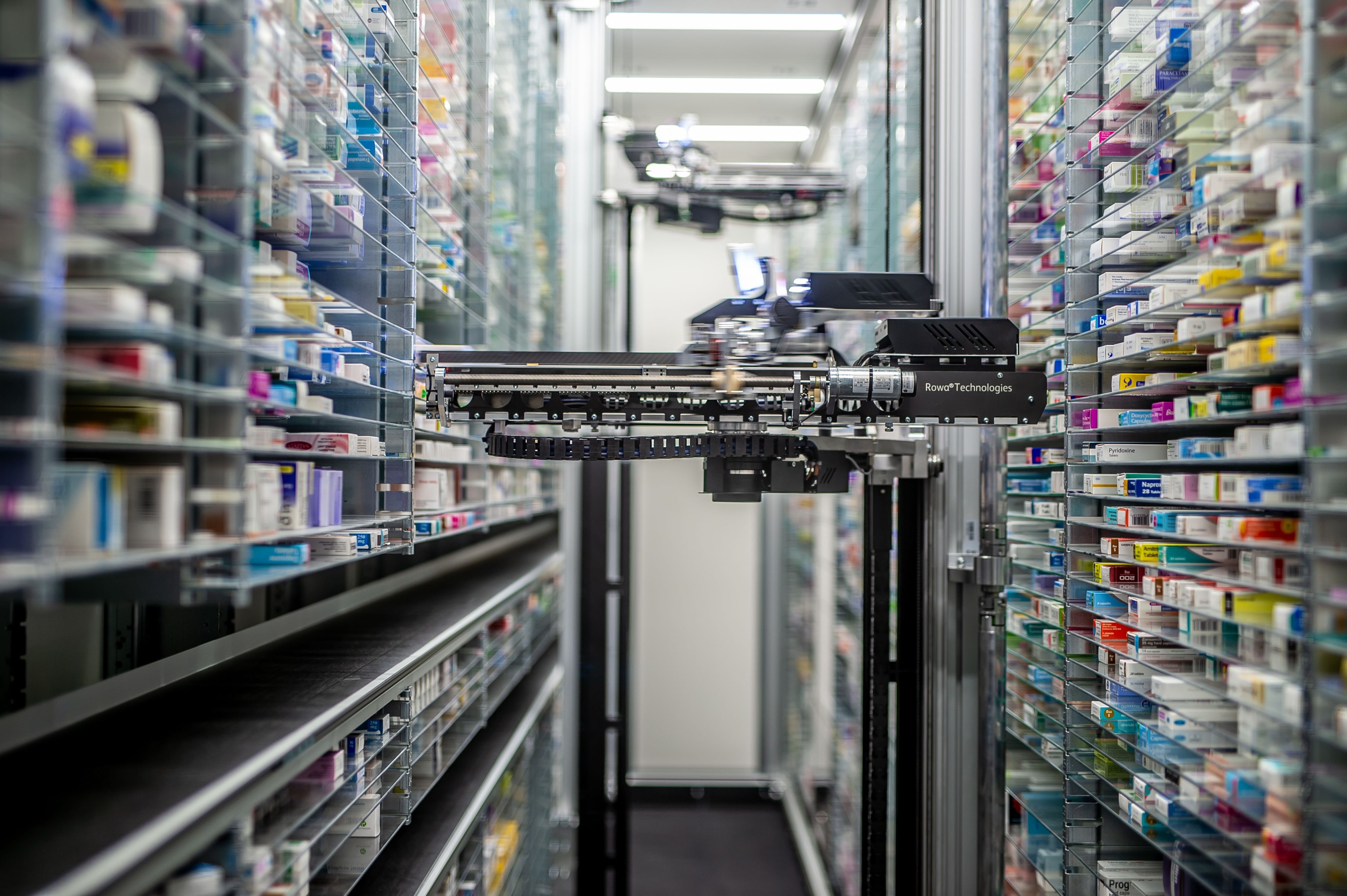St Thomas' Hospital
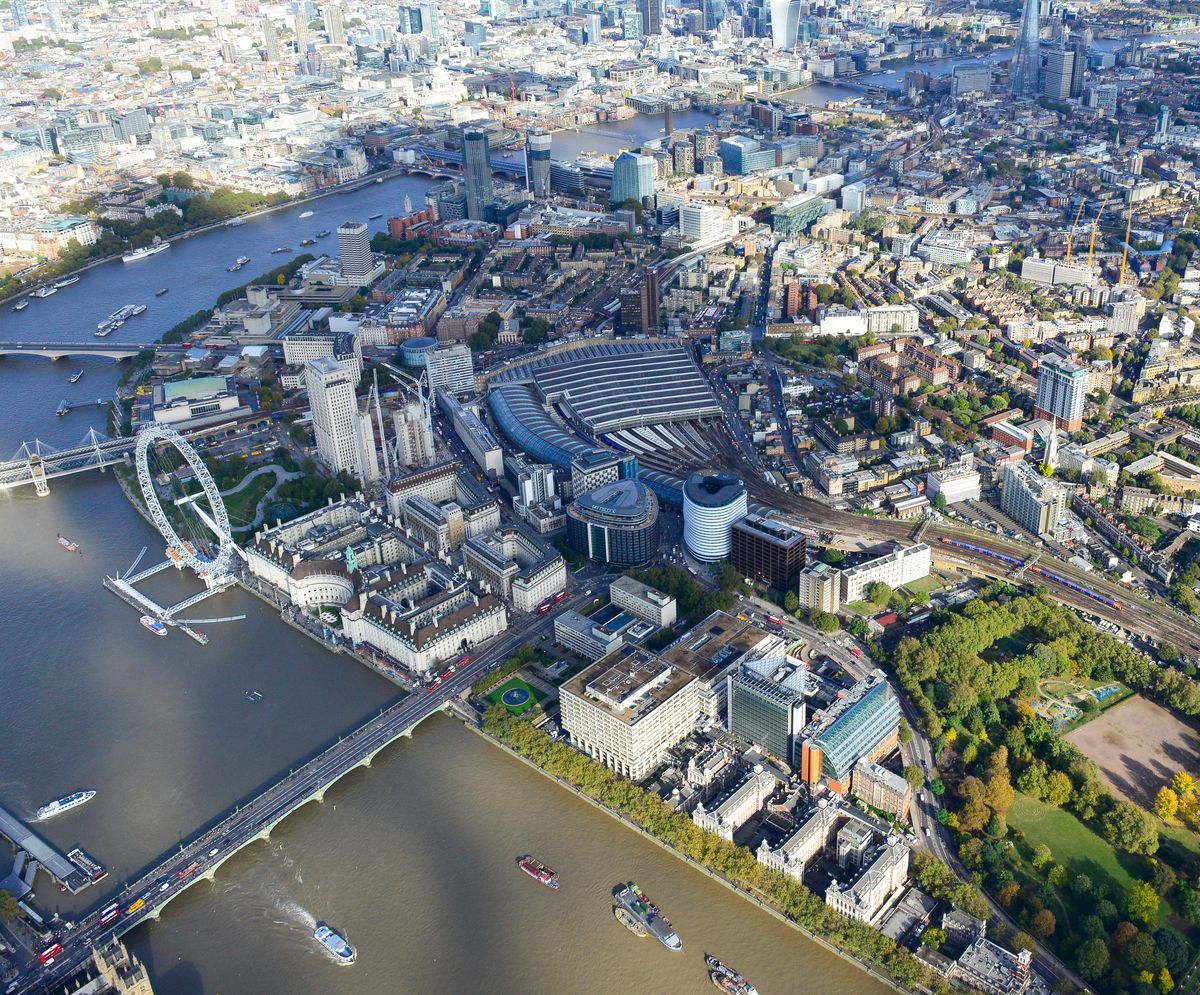
St Thomas’ is one of the oldest hospitals in the country. In 1173 the already well established infirmary of St Mary Overie in Southwark was renamed St Thomas’ Hospital in tribute to Archbishop Thomas Becket who had been murdered in Canterbury Cathedral three years before.
In 1215 it was relocated to Trenet Lane, then later to St Thomas Street, Southwark. Originally run by a mixed order of Augustinian canons and canonesses, the hospital provided shelter and treatment for the poor, sick, and homeless.
In the 15th century, Richard ‘Dick’ Whittington endowed a lying-in ward for unmarried mothers.
The monastery was dissolved in 1539 during the Reformation and the hospital closed but reopened in 1551, rededicated to Thomas the Apostle, thanks to the efforts of the City of London who obtained the grant of the site and a charter from Edward VI. It was at this time that its famous medical school was established.
The hospital has remained open ever since.
By the end of the 17th century, the hospital needed refurbishment and more space. A rebuilding fund appeal was launched in 1693 and, led by Sir Robert Clayton, president of the hospital and a former Lord Mayor of London, work on the new 200 bed hospital was largely completed by 1709.
Some parts of the old St Thomas' Hospital survive on the north side of St Thomas Street including the old St. Thomas' Church, now used mostly as offices but including the Old Operating Theatre, which is now a museum.
St Thomas’ hospital left Southwark in 1862, when its ancient site was compulsorily purchased to make way for the construction of the Charing Cross railway viaduct from London Bridge Station. The hospital was temporarily housed at Royal Surrey Gardens in Newington (Walworth) until new buildings on the present site in Lambeth were completed in 1871.
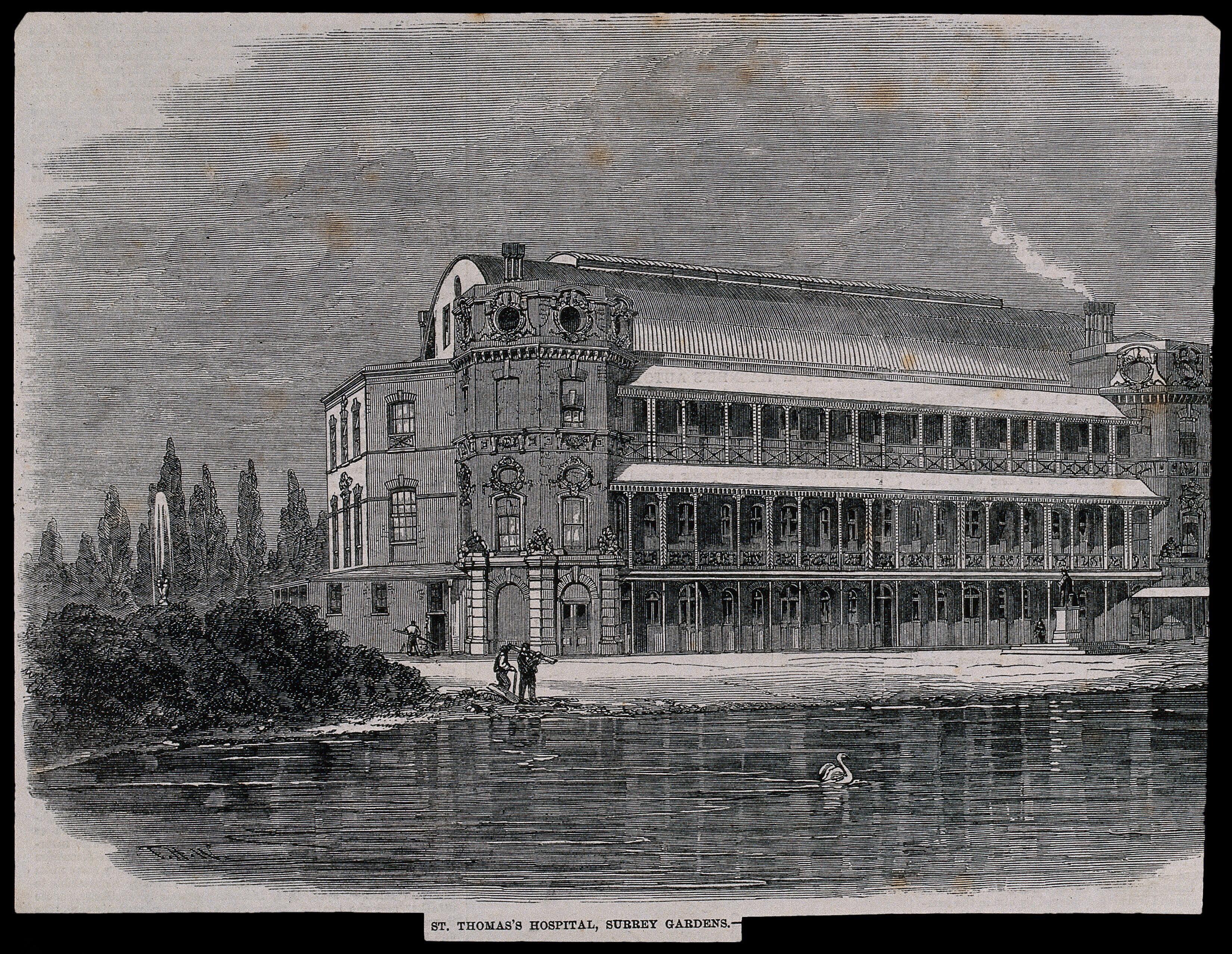
St Thomas' Hospital when temporarily in Surrey Gardens. Wood engraving by T. H. Wilson, 1862. Wellcome Collection.
St Thomas' Hospital when temporarily in Surrey Gardens. Wood engraving by T. H. Wilson, 1862. Wellcome Collection.
The Victorian hospital in Lambeth
The present-day St Thomas' Hospital is located directly across the River Thames from the Palace of Westminster on land largely reclaimed from the river during construction of the Albert Embankment in the late 1860s.
Queen Victoria laid the foundation stone in 1868 and opened the new buildings in 1871. The hospital initially had 600 beds and was one of the first new hospitals to adopt the ‘pavilion principle’ – popularised by Florence Nightingale in her Notes on Nursing – by having 6 separate ward buildings linked by low corridors. The intention being to improve ventilation and to segregate patients with infectious diseases.
First World War
The hospital was requisitioned in 1914 to create the 5th London General Hospital to treat military casualties. Extra beds were created by erecting 6 huts on the site – 5 were used as wards, imaginatively labelled A to E, while the sixth was used for recreation.
Second World War
St Thomas’, like Guy’s, was repeatedly bombed during the Blitz, but, like the Windmill Theatre, it never closed.
The first bomb, on 9 September 1940, killed 2 nurses and 4 physiotherapists. During the war, 10 members of staff were killed and many wounded, but incredibly, no patients were seriously injured.
Heavy bombing in 1941 caused further destruction. By the end of the war, the northern part of the hospital was severely damaged, with 3 ward blocks destroyed.
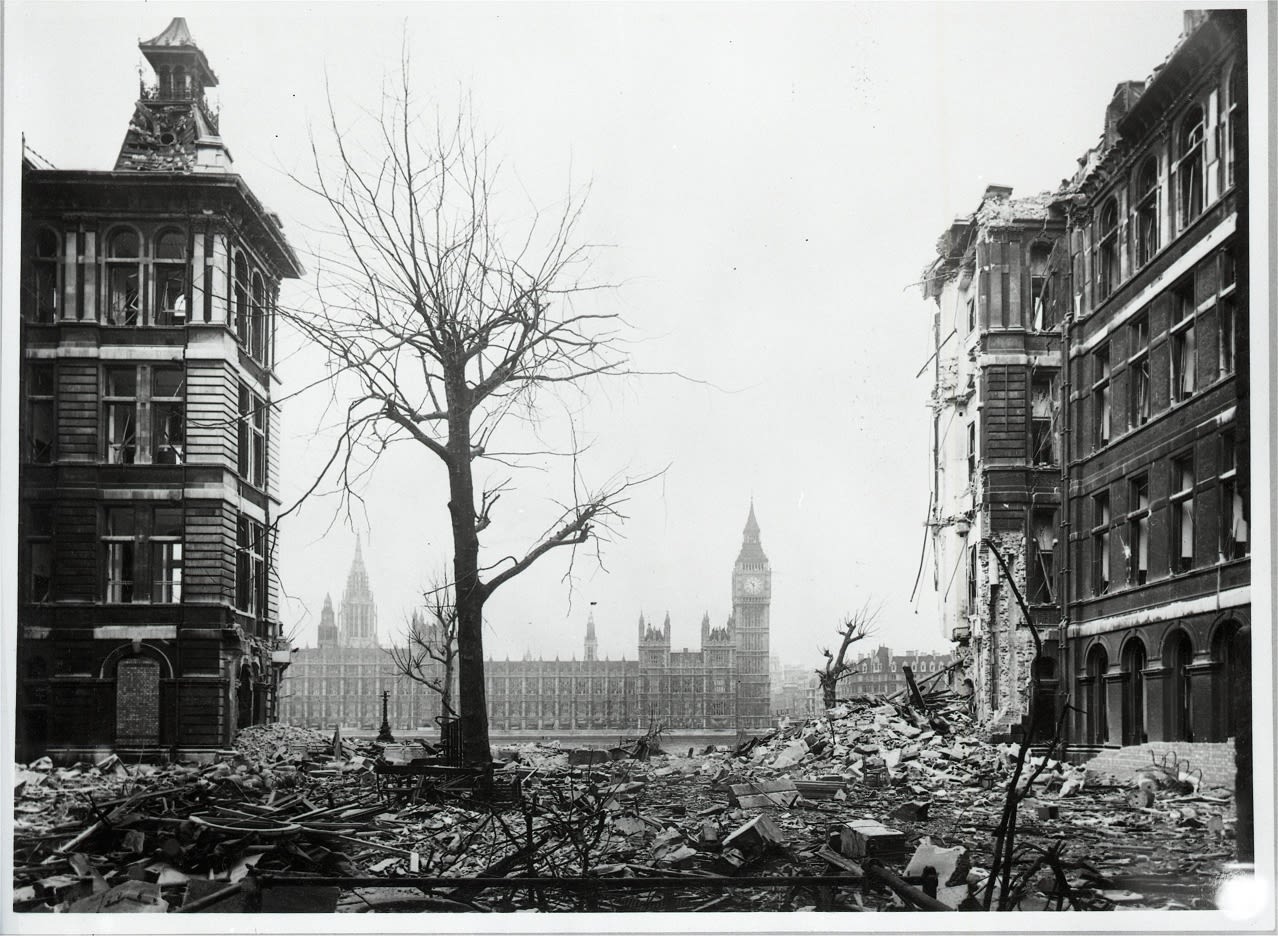
Post war reconstruction
On the establishment of the NHS, St Thomas’ had just over 500 beds. It was designated a ‘Teaching Hospital Unit’ with responsibility for 5 other hospitals and a total of 982 beds.
Following limited reconstruction in the 1950s, complete rebuilding to a more ambitious plan and designs by Yorke Rosenberg Mardall was agreed on in the 1960s. This required the realignment of Lambeth Palace Road further away from the river to enlarge the hospital campus.
The East Wing, including the Casualty Department, was opened in 1966. The 13 storey North Wing, Gassiot House and a 5 storey outpatient block were completed in 1975 and opened by Queen Elizabeth II the following year.
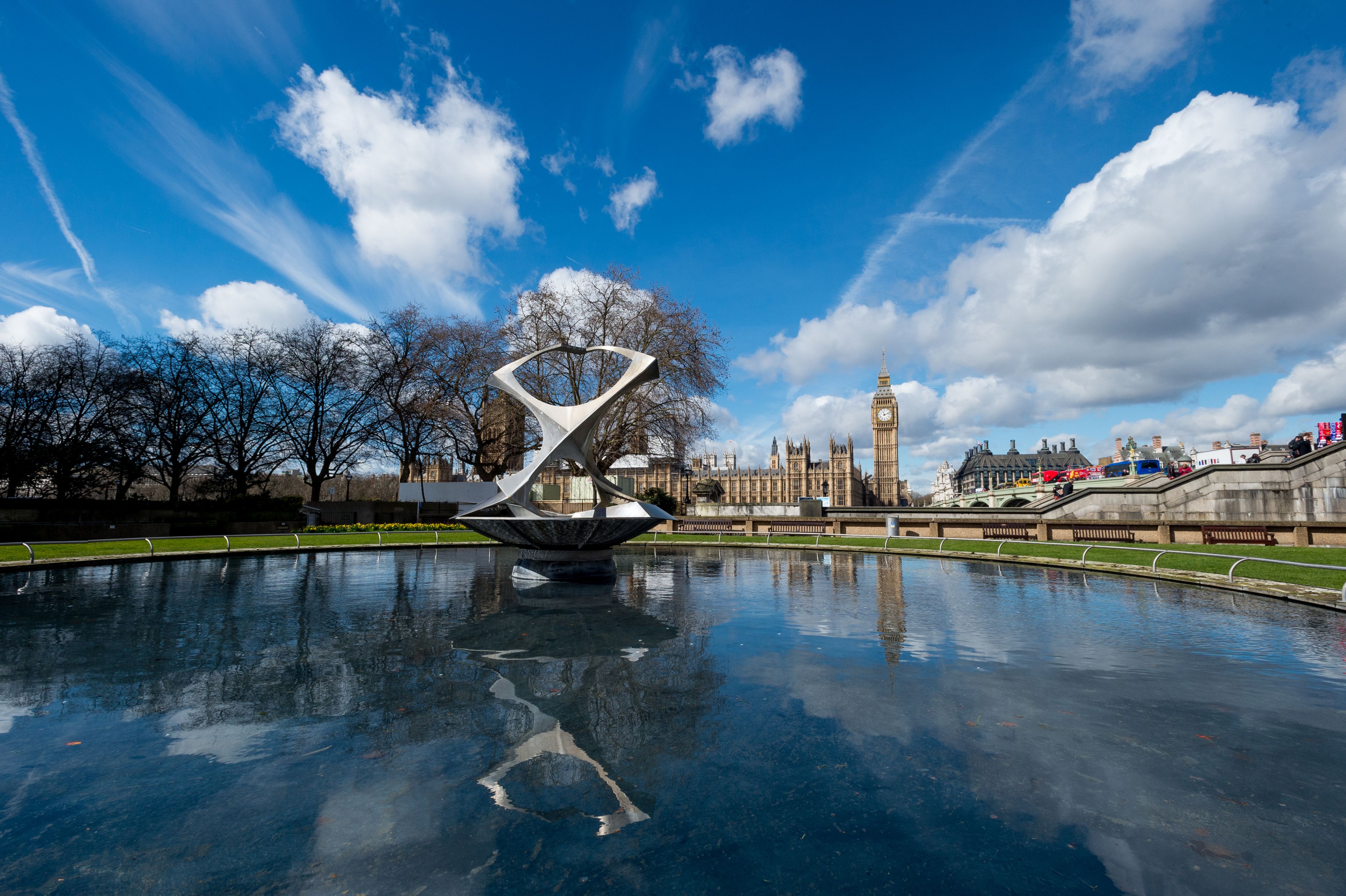
The Revolving Torsion fountain in the gardens of St Thomas' Hospital, by Naum Gabo
The Revolving Torsion fountain in the gardens of St Thomas' Hospital, by Naum Gabo
The abstract modern garden, also by Yorke Rosenberg Mardell, features a fountain, entitled Revolving Torsion, by Naum Gabo, a Russian Constructivist sculptor who moved to England in the 1930s and influenced a generation of sculptors, including Barbara Hepworth and Ben Nicholson.
In 2016, a statue of Mary Seacole, by Martin Jennings, was unveiled in St Thomas’ garden. It was the first statue in the UK to honour a named black woman, and recognises Mary Seacole’s contribution, particularly as a nurse, and that of people from ethnic communities to British society.
The southern part of the redevelopment, which would have included a second tall block, was never built. Instead, the three remaining Victorian ward pavilion blocks were refurbished in the 1980s. They are now Grade II listed buildings.

A view of the St Thomas' Hospital site looking across Westminster Bridge
A view of the St Thomas' Hospital site looking across Westminster Bridge
The most recent major building opened in 2005 when the children's departments moved to award winning new facilities at Evelina London Children's Hospital to the south-east of the main hospital, on the site of Riddell House, a former nurses’ home.
Merger with Guy’s Hospital
In 1993, St Thomas' merged with Guy’s to form one hospital trust. Accident and emergency services were subsequently consolidated at St Thomas' Hospital, while Guy’s developed as the main academic centre.
Delivering services in the community
In 2011, Guy’s and St Thomas’ assumed responsibility for the management and delivery of Community Health Services in the London Boroughs of Lambeth and Southwark in an innovative move to better integrate care between hospitals and the community.
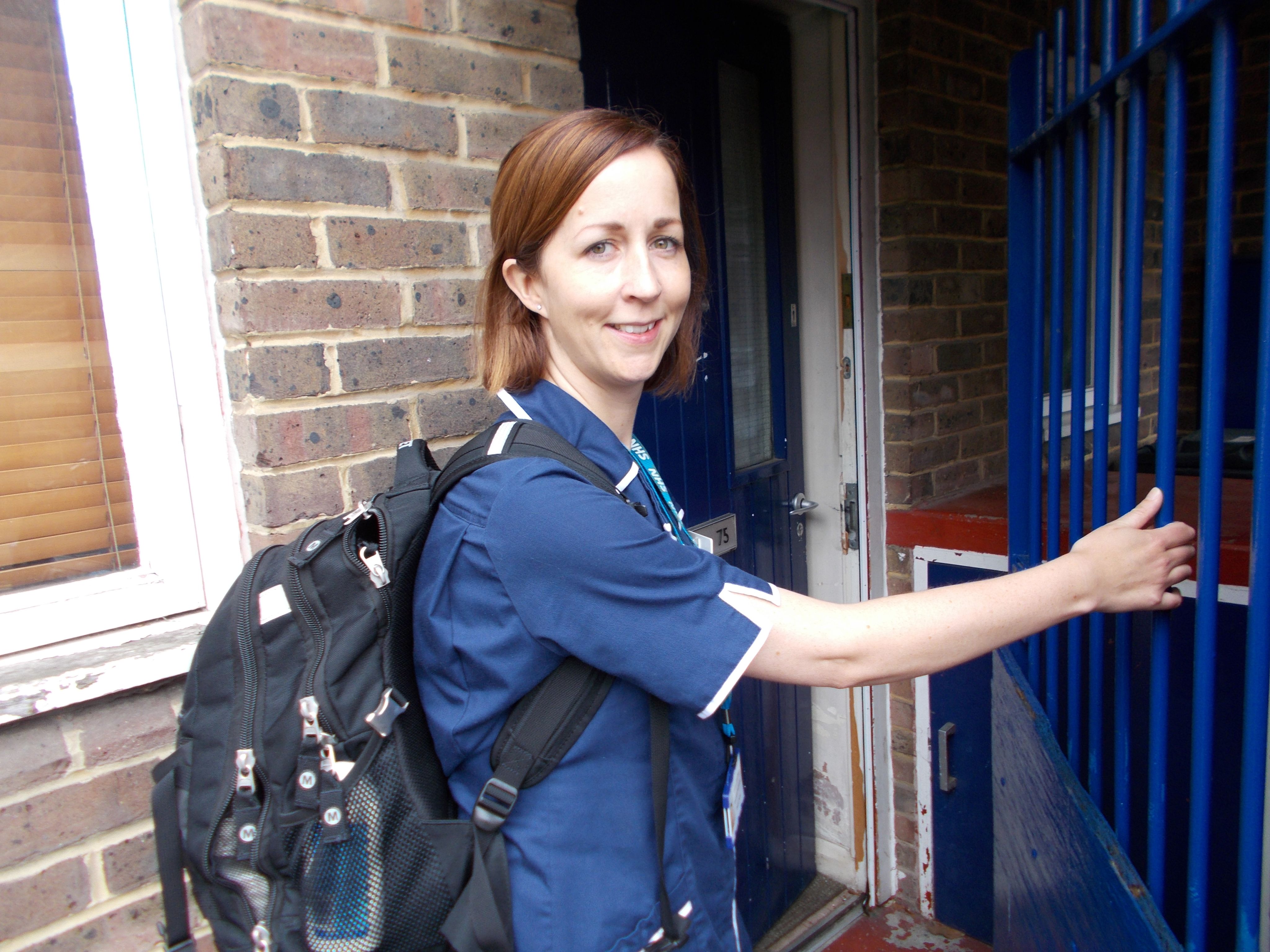
A nurse on a home visit in 2017
A nurse on a home visit in 2017
Merger with Royal Brompton and Harefield hospitals
Royal Brompton and Harefield hospitals became part of Guy's and St Thomas' NHS Foundation Trust in February 2021. Together with St Thomas’ and Evelina London, this group, north and south of the river, now form the largest specialist heart and lung centre in the UK and among the largest in Europe.
Medical training at St Thomas’
St Thomas's Hospital Medical School was established in 1550.
When Guy's Hospital was established as a separate institution, it formed a single medical school, commonly known as The Borough Hospitals, with teaching across St Thomas' and Guy's Hospitals.
Following a dispute over the successor to the Surgeon Astley Cooper, Guy's established its own separate medical school in 1825.
The medical schools subsequently remerged in 1982 to form the United Medical and Dental Schools of Guy's and St Thomas' Hospitals (UMDS). Subsequent additions included the Royal Dental Hospital of London School of Dental Surgery joining with Guy's Dental School in 1983 and St John's Institute of Dermatology in 1985.
In 1998, UMDS merged with King's College School of Medicine and Dentistry to form The Guy's, Kings & Thomas' Schools of Medicine (GKT School of Medicine), of Dentistry and of Biomedical Sciences.
Famous firsts and innovations at St Thomas’
St Thomas’ Hospital has been at the forefront of medical development throughout its history. These are just some of the firsts and innovations we have brought to patients:
1860 – Florence Nightingale established the first professional nursing school in the world at St Thomas' Hospital.
1947 – The first hospital to begin the formal training of theatre technicians, currently known as operating department practitioners.
1949 – Sir Harold Ridley achieved the world's first implantation of an artificial lens in the eye, treating a cataract in a 49-year-old female patient.
1954 – Peter Styles from St Thomas’ Electronics Department, working with Multitone Electronics, invented the world’s first ‘bleep’ paging system.
1967 – Dame Cicely Saunders, who worked at St Thomas', founded the first modern hospice.
1980s – Dr Chris Aps introduced changes at St Thomas’ Hospital which allowed cardiothoracic surgical patients to recover away from the intensive care unit in an overnight intensive recovery unit: this has become a template for similar units across the UK.
2010 – The first three-way translocation baby was delivered at St Thomas’. Three-way balanced translocations, also known as chromosome rearrangement, are unusual and can lead to infertility as well as abnormal embryos.
2014 – Doctors at St Thomas' complete a mitral heart valve replacement on a beating heart for the first time in the world. The mitral valve helps make sure blood flows in one direction through the heart. Before this breakthrough, the valve could only be replaced with open heart surgery.
2014 – A team at St Thomas’ become the only one in the country using the Parachute implant to help patients with severe heart failure when other medical treatments are not working.
2020 – Experts at St Thomas’ Hospital implanted three leadless heart devices in one patient in a world first
2021 – A surgical team at St Thomas’ perform the first procedure in the UK, and one of the first in the world, to treat a type of aneurysm completely by keyhole surgery.
